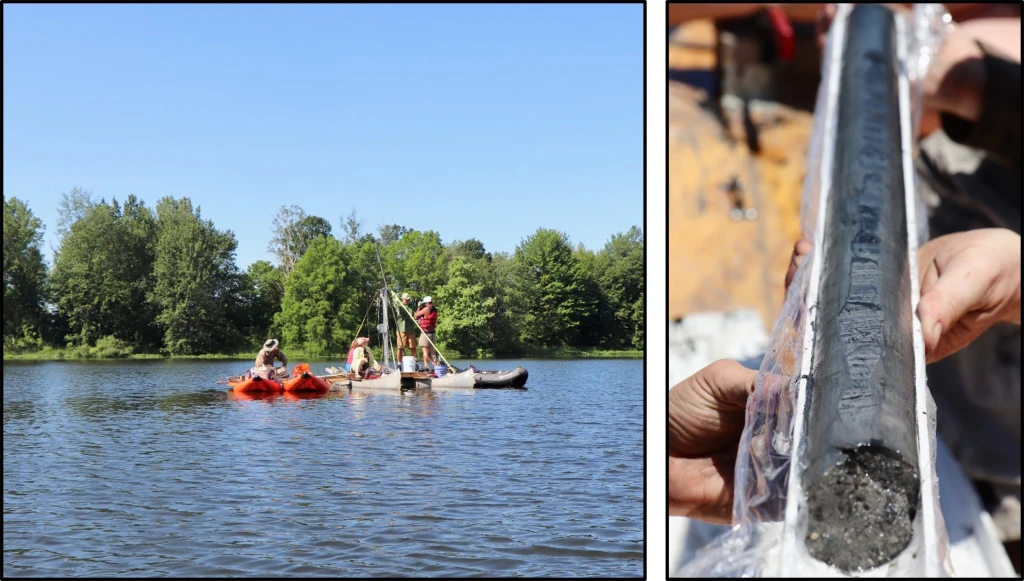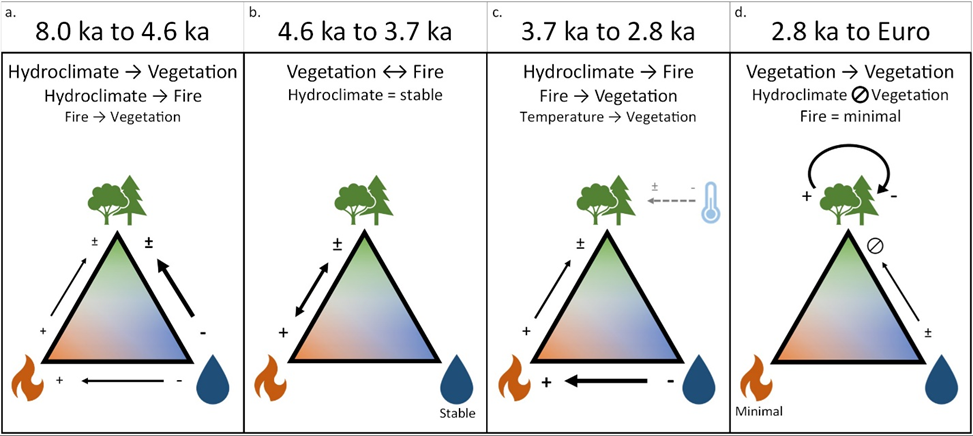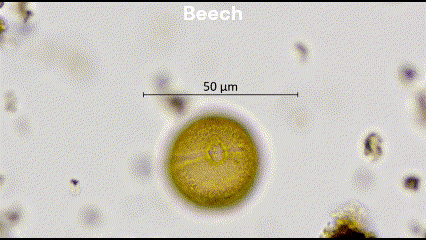|
Getting your Trinity Audio player ready...
|
Nora Schlenker discusses her paper ‘Interacting effects of fire and hydroclimate on oak and beech community prevalence in the southern Great Lakes region.’
Background
Every year pollen rains down from terrestrial plants and makes us sneeze. But as pollen lands on the surface of lakes and settles in lakebed sediments, it also provides a continuous record of the plants that grew around that lake and the changes in plant community composition, decade by decade, over thousands of years. This deep time ecological perspective can provide the context of forest transformations of the past to better understand how forests may change in the future in the face of rising temperatures, increasing hydroclimate variability, and changing fire regimes. Prior work has shown that the forests of the Great Lakes region, which are seemingly stable today, have been surprisingly dynamic over the last 10,000 years.
Our Study
In this study, we investigated the causes of rapid ecosystem conversions in mesic temperate forests of the southern Great Lakes region through a new, multi-proxy 8,000-year sediment record from Story Lake, in Northern Indiana. Story Lake is an ideal location to understand ecosystem transitions because, prior to European-American settlement, the surrounding vegetation was a mosaic of prairie, oak-dominated forests/woodlands, and American beech-dominated hardwood forests. Our new record includes proxies for vegetation composition, based on counting the abundance of different pollen taxa, fire history, based on counting macroscopic charcoal, and hydroclimate changes from lake-level reconstruction and isotopic analysis of pollen grains which indicate changes in intrinsic water use efficiency (iWUE) of beech trees. These proxies came from the same sediments which allowed us to test hypotheses about the relative timing of rapid vegetation changes and potential drivers. We also studied other nearby sites to assess whether rapid vegetation changes were localized or were synchronized across the southern Great Lakes Region.
Our Findings

This new record revealed that these terrestrial ecosystems were highly dynamic, with a shifting sensitivity to fire and climate. From 8,000 to 4,600 years ago, beech populations first expanded as part of post-glacial warming and range expansion. Beech-hardwood forests then underwent a two-step decline at 5,000 and 4,600 years ago. These declines correspond closely to an intensifying fire regime and brief periods of increased iWUE, which likely signals water stress of beech. From 4,600 to 3,700 years ago, oak forests/woodlands prevailed along with an active but low-intensity fire regime, indicating a strong fire-vegetation coupling.
Around 3,700 years ago, fire activity abruptly declined at the same time that water availability increased (and iWUE decreased), suggesting a direct regulation of fire regime by climate. As fire activity diminished, hickory abundances increased, suggesting a first stage of in-filling oak woodlands and establishment of oak-hickory forests. Beech-hardwood forests rapidly re-establish 2,800 years ago, approximately 400 years after the cessation of fire regime. This long delay suggests that some abrupt ecosystem transitions may occur centuries after the original triggering event. Beech-hardwood forests then remained stable until European American settlement despite large fluctuations in beech iWUE, suggesting the establishment of a new stable state and a stabilizing negative feedback loop in which high beech abundances creates moist microclimates increasing beech-hardwood forests resilience to hydroclimate variability.
Beech abundances at all sites in northern Indiana show large variations, suggesting that these systems were highly dynamic prior to European American settlement. However, the timing varies: beech abundances at other sites near to Story Lake (within 15 km) are all similar but timing of abrupt beech declines at the more distal Spicer Lake (120 km west near Lake Michigan) is different. This suggests that local- to landscape-scale interactions between vegetation, fire regime, and climate are the dominant drivers of vegetation change in these beech-oak-prairie mosaics of Northern Indiana.

Interpretation
Our results thus suggest that fire-drought-vegetation feedbacks are an underappreciated source of risk for forests in the Great Lakes region, with rising temperatures and future drought events having the potential to greatly affect beech populations by initiating more fires and favouring oak forests as seen at Story Lake during the Holocene. In addition, the introduced beech bark disease is a major threat to American beech, and changes in fuel load caused by a century of fire suppression and land use fragmentation may lead to complex new interactions between climate variability, disturbance regime, and forest dynamics in the southern Great Lakes region during the 21st century.

